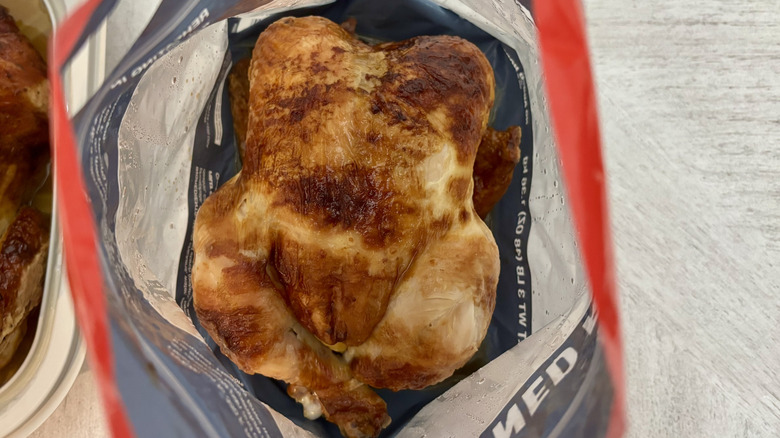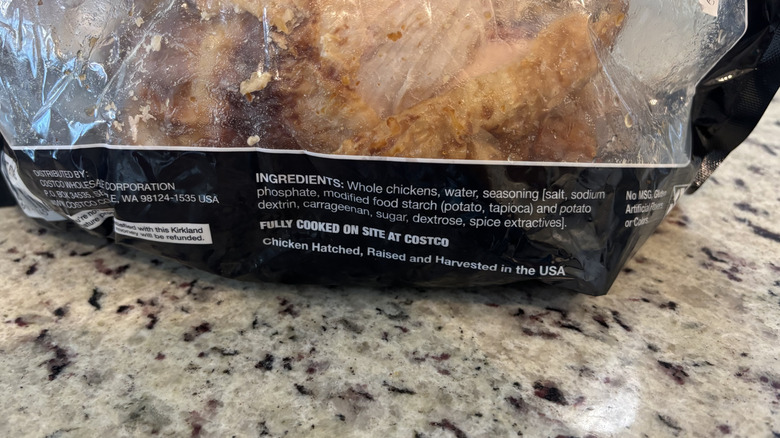As one of America’s largest warehouse club retailers, Sam’s Club sells a massive amount of chicken every year to families across the country. But have you ever wondered exactly where all that chicken comes from before landing in the meat section at your local Sam’s Club?
I was curious about the origins myself, so I did some digging into the supply chain and sourcing practices behind Sam’s Club chicken. Here’s a comprehensive look at where this popular product comes from and how it makes its way to the warehouse.
The Chicken Supply Chain: A Massive, Integrated System
Sam’s Club does not own or operate any chicken farms directly. Instead, it relies on a handful of large-scale chicken producers like Tyson Foods, Pilgrim’s Pride, and Perdue to supply its warehouses.
These mega poultry companies contract with thousands of independent farms across the country to raise chickens. While the specific farm is hard to pinpoint, many are clustered in the major chicken producing states like Arkansas, Georgia, Alabama, Mississippi, and North Carolina.
The relationship between the poultry company and the farm is tightly integrated. The company provides the chicks, feed, and medication while the farmers are obligated to raise the birds to market weight. The chickens are then picked up for processing and distribution to Sam’s Club.
This integrated system gives companies like Tyson Foods an incredible amount of control over the process from start to finish. The finished chicken products are shipped to Sam’s Club warehouses where shoppers can purchase them.
The Question of Quality and Ethics
With any food product sourced on such a massive scale, questions around quality, ethics, and sustainability inevitably arise. Here are some of the key considerations:
-
Quality Control: Sam’s Club relies on the quality control methods of its suppliers. Most have stringent protocols around safety and hygiene, but concerns linger about antibiotic use promoting resistance.
-
Animal Welfare: Intensive farming practices often sacrifice animal welfare for efficiency and have drawn criticism from groups like ASPCA. More humane standards around space, enrichment are needed.
-
Sustainability: The environmental impact of large-scale chicken production through high water usage, emissions, and waste runoff can be substantial. Renewable energy and improved practices help.
-
Transparency: Tracing chicken back to individual farms remains challenging. More visibility into sourcing and practices is important for consumer trust.
Digging Into the Specifics: Frequently Asked Questions
To shed more light on the specifics of Sam’s Club chicken, here are answers to some common questions:
Is the chicken organic?
No, Sam’s Club chicken is conventionally raised without organic certification. They may offer organic chicken on a limited basis.
Is it treated with hormones/steroids?
Federal law prohibits the use of hormones and steroids in poultry in the U.S. So no Sam’s Club chicken contains added hormones or steroids.
What about antibiotic use?
Some Sam’s Club chicken may be treated with antibiotics to prevent disease, although reduced use is becoming more common. Look for “no antibiotics ever” labels for chicken raised without.
What are the chickens’ living conditions?
The typical conditions are enclosed houses with thousands of other chickens and limited ability to engage in natural behaviors. More humane standards are needed.
Is any of the chicken pasture-raised?
Sam’s Club chicken is generally not pasture-raised or free-range. These labels indicate better access to the outdoors.
Can I trace the chicken back to a farm?
End-to-end traceability from store to farm is not currently possible with Sam’s Club chicken. Check packaging for the supplying poultry company.
Is it thoroughly inspected?
Yes, all Sam’s Club chicken undergoes inspection by the USDA Food Safety and Inspection Service to ensure it meets requirements.
Does Sam’s Club offer air-chilled chicken?
Some locations may offer air-chilled chicken depending on regional supply and preferences. Check packaging to confirm the chilling method used.
How does the price compare to other stores?
Sam’s Club frequently offers competitive bulk pricing on chicken due to its purchasing power, but always compare to confirm the best deal.

Taste test: Costco Rotisserie Chicken

Walking toward the back of Costco, youll see a bakery, butcher, and deli space. Right in the middle of it all is a line of machines cooking up rotisserie chicken. If youre lucky enough, youll witness associates bagging cooked chicken and placing it on the warmers before adding more skewered chickens to cook.
Costcos rotisserie chicken comes in a plastic bag. It is microwaveable to reheat leftovers, even though the bag really doesnt look hearty enough to be microwaved. In any case, youll be lucky to have any leftovers of the chicken. Instead, I find this bag helpful for getting the chicken to fit in the refrigerator if Im using it for a meal in the following couple of days.
When sampling, as I peeled the chicken off, I noticed the slight crunch of the skin, but the juiciness really stood out. There was a moistness to the meat that made it enjoyable to eat. Seasoning-wise, I thought it had an enjoyable flavor with seasoning that supported the chicken flavor rather than trying to cover it up. It was neither under or over seasoned but rather the perfect amount.
Nutrition information and ingredients

Between the two rotisserie chickens, the nutritional differences arent anything substantial. Both chickens come in at 140 calories with 7 grams of fat and 19 grams of protein. The only place they differ is in the sodium numbers. The Costco bird has 460 milligrams of sodium, and Sams Club has 430 milligrams. The difference in your recommended daily intake is only 1%.
In terms of ingredients, there is slightly more variance. While the Costco bird has a simpler ingredient listing, it has one ingredient that may be a little concerning to some: carrageenan. Its intent is to thicken or even provide preservative quality to food. For some, it will be important to note that although the additive is very common, often in other meat products and even nut milks, it may have some concerning effects on your digestive system.
